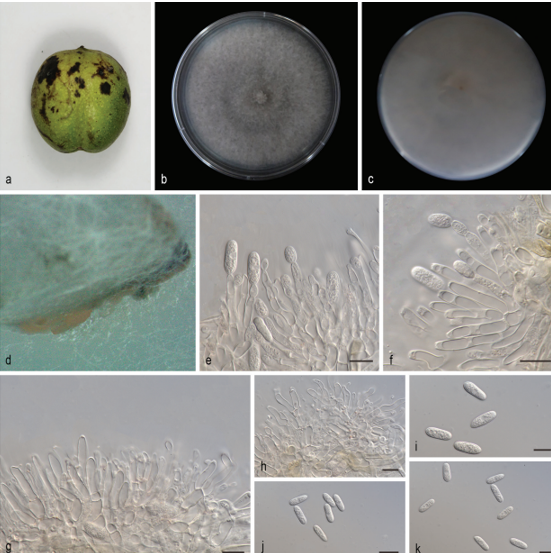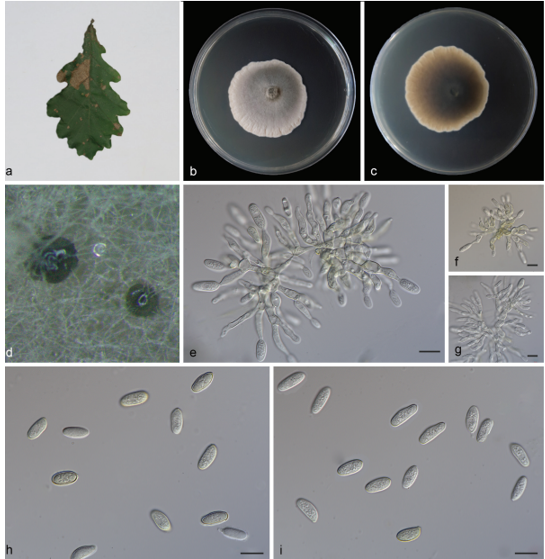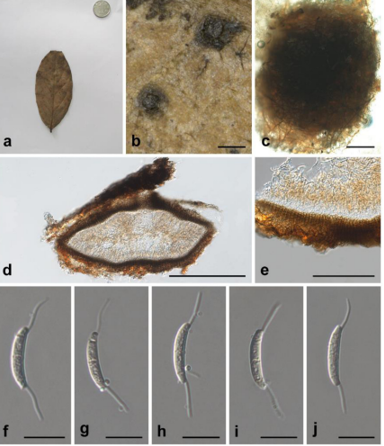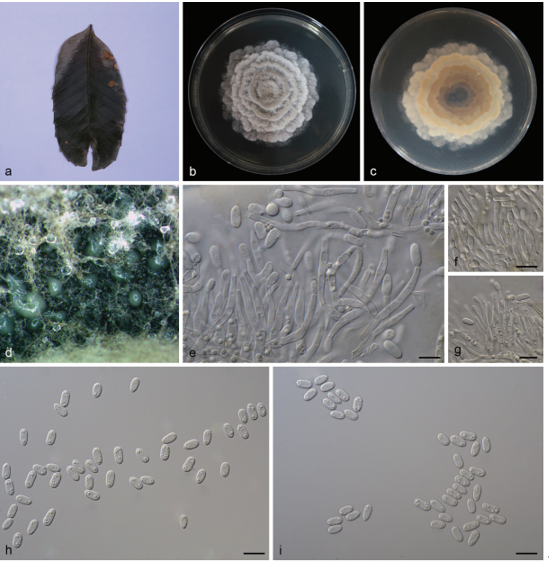Cortinarius xiaojinensis T.Z. Wei, M.L. Xie & Y.J. Yao 2020
Fungal Name number: FN 570649; Facesoffungi number: FoF 06103
Holotype: CHINA, Sichuan Province, Xiaojin County, National Scenic Area of Four Girls Mountains, 30°59′32.26″ N, 102°50′52.47″ E, alt. 3468, on ground in mixed forest with Abies fabri and Picea sp, 17 August 2015, TTie-Zheng Wei, Di Wang 5602 (HMAS274355, holotype), Tie-Zheng Wei, Di Wang 5685 (HMAS274425).
Morphological description
Basidiocarps gregarious. Pileus 3.2–4.5 cm diam, firstly hemispherical, then convex, finally convex-applanate to applanate, sometimes slightly umbonate at center; margin decurrent to straight; surface brown (Cinnamon-Brown), dark brown (Chestnut) to blackish brown (Bay) with dark brown minute flocci from universal veil, margin paling to greyish brown with distinct olive tint (Dark Citrine), slightly hygrophanous when moist. Lamellae adnate to emarginateadnate, up to 4 mm wide; pale brown to greyish brown with slightly olive tint (Buffy Brown) when young, brown with slightly rust tint (Mikado Brown to Hazel) when mature, close, with lamellulae. Stipe 5.5–7 × 0.6–1.1 cm, central, cylindrical, base thickening to 1.3 cm diam; surface pale greyish brown (Olive-Buff) to pale olive brown (OliveOcher), base darkening to brown, with pale brown to rust floccules from universal veil; rough, solid to soft. Cortina greyish at first, finally rusty brown due to the mature basidiospores being trapped in it. Context up to 3 mm thick at center, pale brown to dull brown, fleshy. Smell not distinctive. Taste mild. Spore print rust brown. Chemical reaction with 20% KOH blackish brown at pileus and lamellae, brown at stipe and context. Fluorescence reaction under ultraviolet light indistinct. Basidiospores (4.7–)5–6(–6.5 ) × (3.8–)4–4.5(–4.7) μm, Q = 1.2–1.4 (x̅ = 1.3); ellipsoid, yellow–brown to brown, minutely to moderately verrucose. Basidia 25–32 × 6–9 μm, clavate, thin-walled, mostly subhyaline, with four sterigmata. Lamella margin heterogeneous, with sterile cells, 20–26 × 6–7 μm, clavate, subhyaline, thinwalled. Cheilocystidia and pleurocystidia none. Pileipellis of cylindrical hyphae, 5–10 μm diam, brownish to yellowish brown. Clamp connections present.
Habitat: ITS: MK411447, MK411448.
Distribution: In China.
GenBank Accession: ITS: MK411447, MK411448.
Notes: Cortinarius xiaojinensis is a species of subgenus Dermocybe with olive brown basidiocarps. According to the phylogenetic analysis based on ITS sequence (Fig. 81), the clade of C. xiaojinensis (with high support) is sister to the clade of C. malicorius, however, the ITS sequence of C. xiaojinensis differs from that of C. malicorius by at least 9 substitutions and indel positions. In C. malicorius the olive tint is weak and only found on the pileus surface (Bidaud et al. 1994; Breitenbach and Kränzlin 2000; Grupo Iberoinsular de Cortinariologos 2009) and in the context (Bidaud et al. 1994; Breitenbach and Kränzlin 2000; Bellù et al. 2005; Grupo Ibero-insular de Cortinariologos 2009; Soop 2018), whereas all parts of the basidiome of C. xiaojinensis have this colour.
Reference: Hai‑Sheng Yuan1,2 · Xu Lu1,2 · Yu‑Cheng Dai3 ·
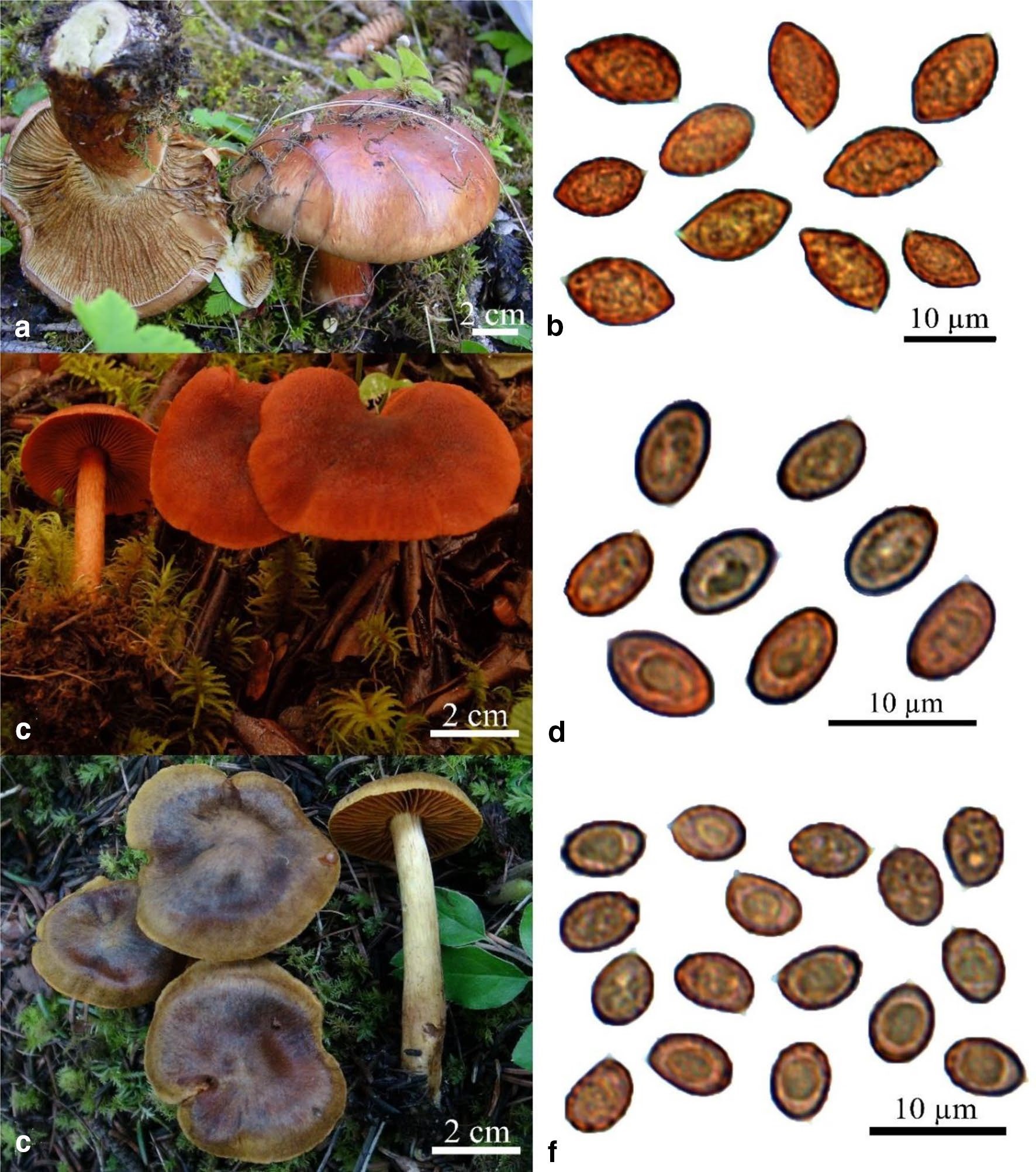
New Cortinarius species from China. a, b. C. sinensis (HMAS 99105, holotype). a Basidiocarps. b Basidiospores. c, d C. subsanguineus (HMAS 250503, holotype). c Basidiocarps. d Basid- iospores. e, f. C. xiaojinensis (HMAS 274355, holotype). e Basidiocarps. f Basidiospores. Scale bar: a,c,e=2 cm, b,d,f=10 µm


